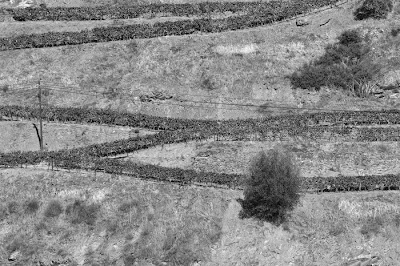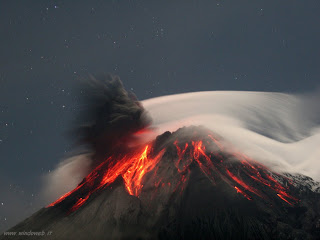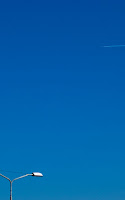Writing about Gerco de Ruijter made me think of the famous landscape photographer of a decade (or two) ago, Martin Kers. What is he up to, nowadays? His website is there, but does not seem to have much that is new. Or am I wrong? If you know, please leave a comment! For I liked some of his photos a lot.
I once saw him in real life, when he gave a presentation with slides for a photo club in Hengelo--obviously, this was before digital photography. The lesson I remember from that presentation was: if you don't need a horizon, don't take it. Zoom in to what is essential in your landscape picture. That's a lesson I took to heart. In fact I already did that sometimes before I heard him say so, but not so consciously. The photo here is one of a later time (a hillside in Portugal, 1995), when I was conscious of leaving out the horizon.
 After his presentation, Kers invited amateur photographers in the audience to give him some landscape slides to comment upon. He got a lot of them, commented on them even though they were mostly not landscapes and quite often of a quality that made me feel embarrassed. And of course there were a number of cases when the slides were projected upside down, so they had to be taken out,inserted again in the right way, etc., etc. Mr. Kers was getting annoyed and had had his fill of this amateurish stuff. I could easily notice that, as I was standing at the ack of the hall, only a few metres from the projector and Mr. Kers.
After his presentation, Kers invited amateur photographers in the audience to give him some landscape slides to comment upon. He got a lot of them, commented on them even though they were mostly not landscapes and quite often of a quality that made me feel embarrassed. And of course there were a number of cases when the slides were projected upside down, so they had to be taken out,inserted again in the right way, etc., etc. Mr. Kers was getting annoyed and had had his fill of this amateurish stuff. I could easily notice that, as I was standing at the ack of the hall, only a few metres from the projector and Mr. Kers.I had brought only two photos, real landscapes, and really good ones, from a trip to the Southwest of the USA, and I felt pretty sure that he would like them. (I really should scan those old slides! I need a vacation, no a sabattical, or the jackpot of the lottery!)
But then fate struck: the last magazine of slides, with only my two slides in it, fell to the ground and that did it for Mr. Kers. He did not want to pick them up, try to dfind out what was right-side up, and then comment on two more most probably (in his thought) mediocre slides. I was not close enough (nor brave enough) to try to convince him otherwise. So I'll never know if those two slides were really as good as I thought.







